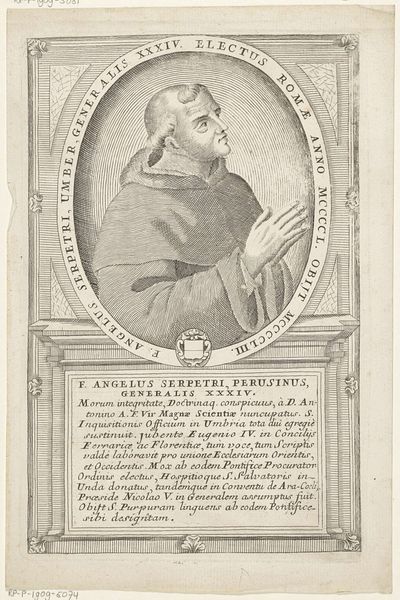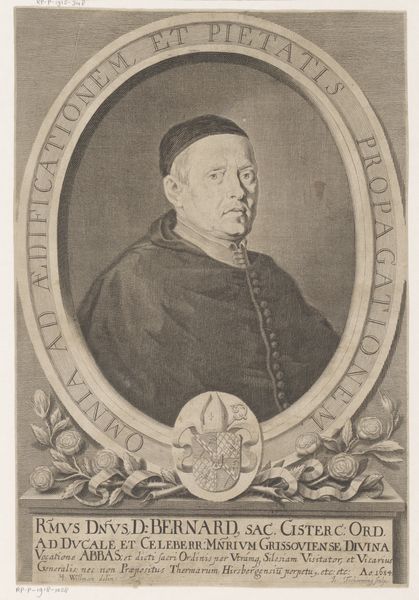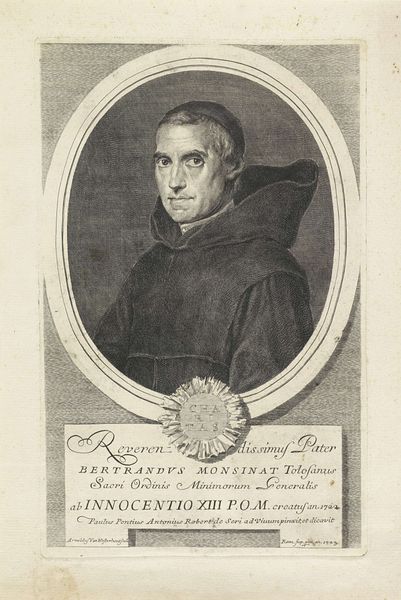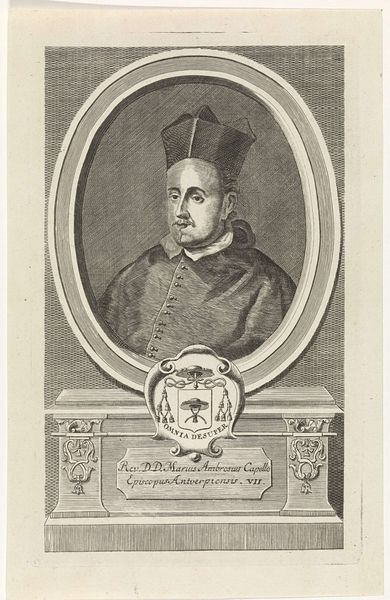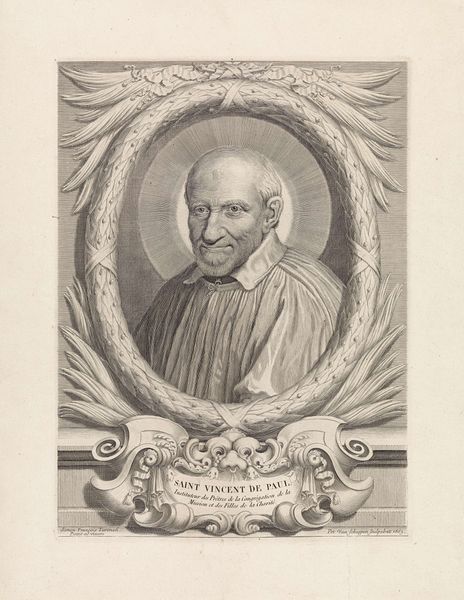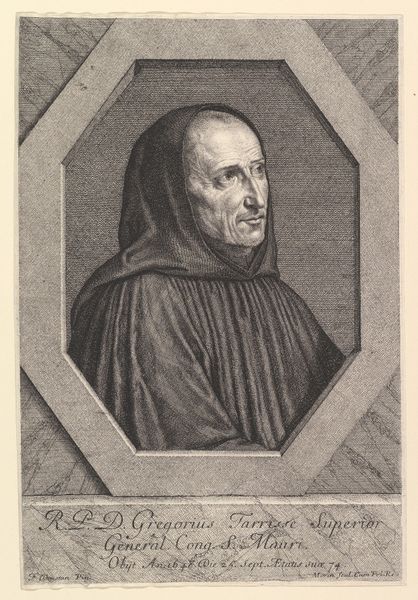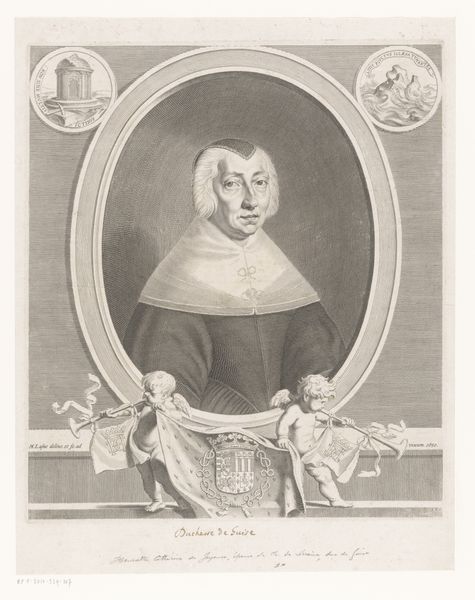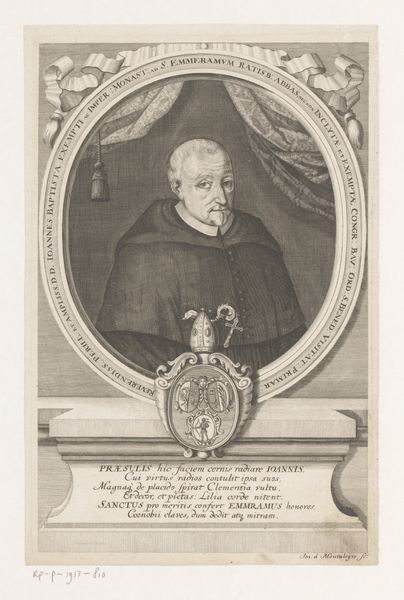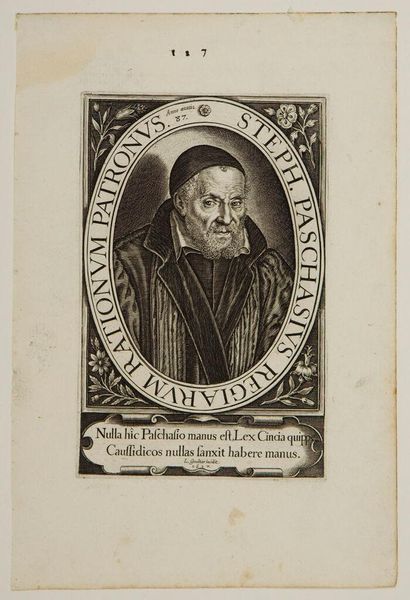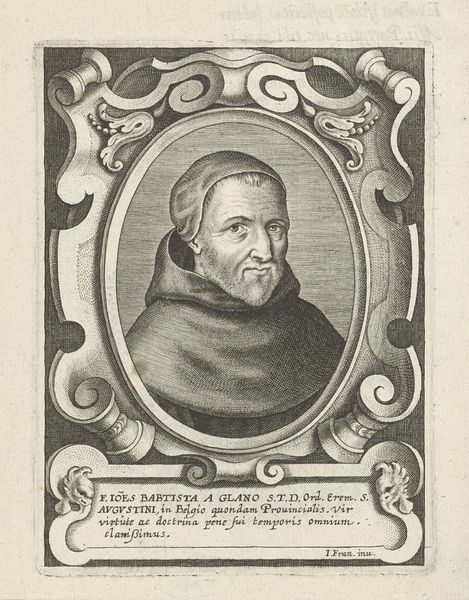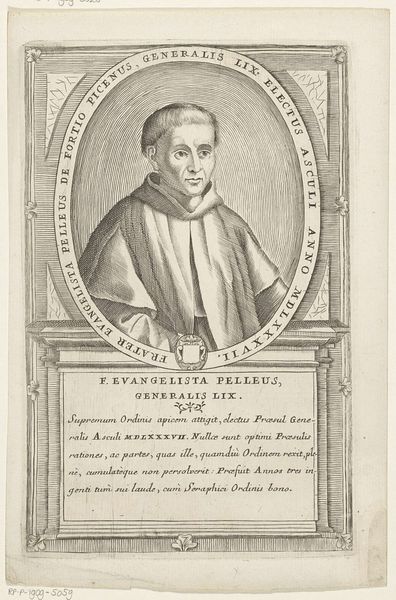
print, engraving
#
portrait
#
baroque
# print
#
old engraving style
#
history-painting
#
academic-art
#
engraving
Dimensions: height 251 mm, width 179 mm
Copyright: Rijks Museum: Open Domain
Curator: Here we have a portrait of an unknown man. This print, dating sometime between 1614 and 1700, is rendered in the baroque style and adheres to academic art standards prevalent at the time. It’s a compelling example of the era's artistic conventions. Editor: It's striking, isn't it? The subject has this intense gaze, very direct. He seems like a figure of significant authority, emanating gravity. Even in the rather stiff composition of the portrait, there is a sense of power embedded. Curator: Absolutely. The placement of the individual within the elaborate frame is critical. We must consider that baroque portraiture frequently served the powerful, reflecting social hierarchies and power dynamics through deliberate visual displays. Consider the ornate details and how the composition uses symbolic language to speak to his social standing. Editor: You’re right. My eye is drawn to the inscription encircling him and those cherubic figures at the top—classic symbols of virtue, or maybe heavenly approval? Also, below him, that elaborate crest; what is that emblem meant to convey? There is clearly symbolism beyond the mere aesthetic quality. Curator: Agreed. Those elements definitely tie into the tradition of history-painting. Given that we do not have firm biographical details about this particular individual, focusing on what can be said about his social role based on symbolic clues is paramount to uncovering layers within the work itself. This work likely served to perpetuate that social memory. Editor: Fascinating how these old engravings distill complex information into simple, memorable, visual devices. This really opens a window into both his self-image and how his community wanted him to be seen. The Baroque emphasis on drama translates wonderfully, even in something as "simple" as a portrait. Curator: Indeed, prints such as these fulfilled an important public function, acting as reproducible and shareable images of influence. The "unknown man" reminds us that portraits are complex social constructions. Editor: Well said, it really makes one think about not just the subject but the society that valued such depictions. The symbolism here makes you contemplate the layers of constructed identity we each present.
Comments
No comments
Be the first to comment and join the conversation on the ultimate creative platform.

